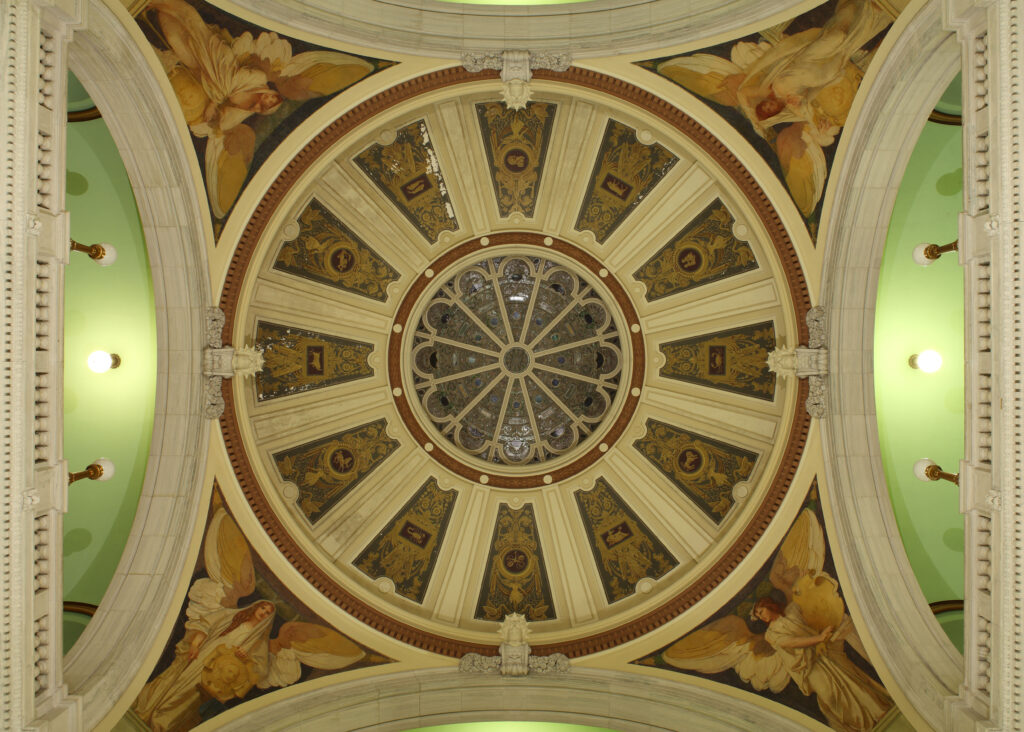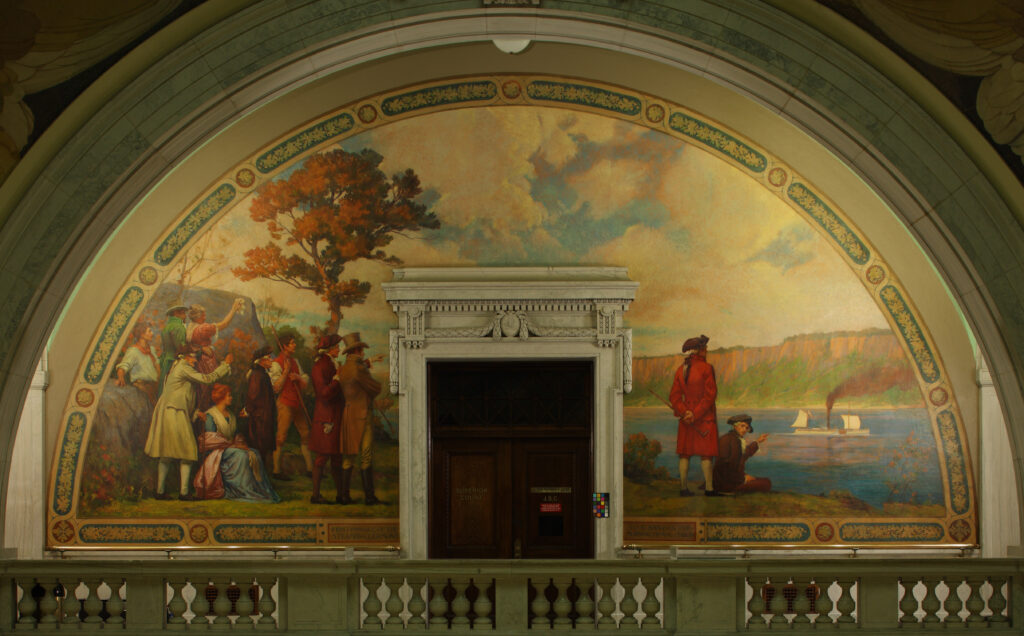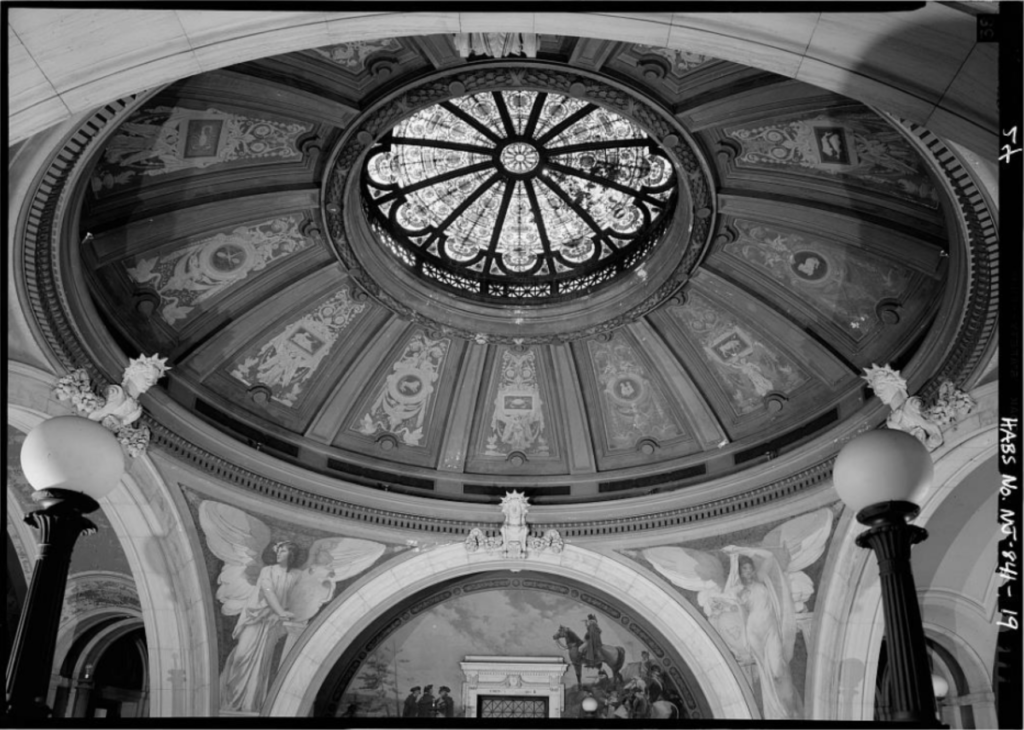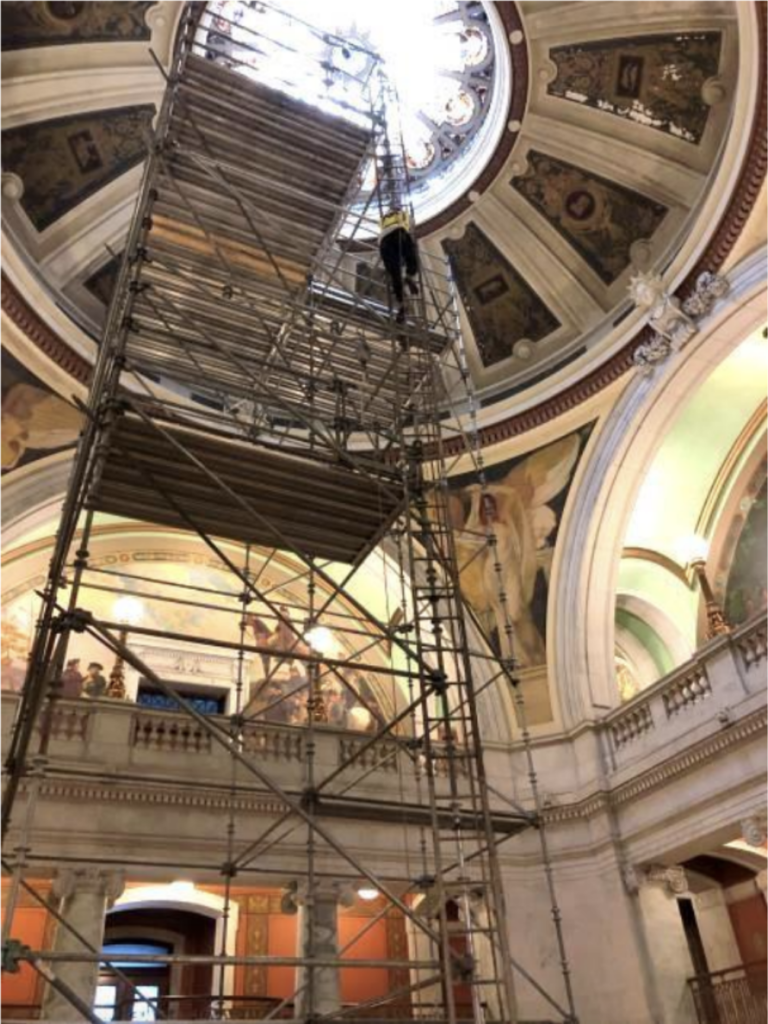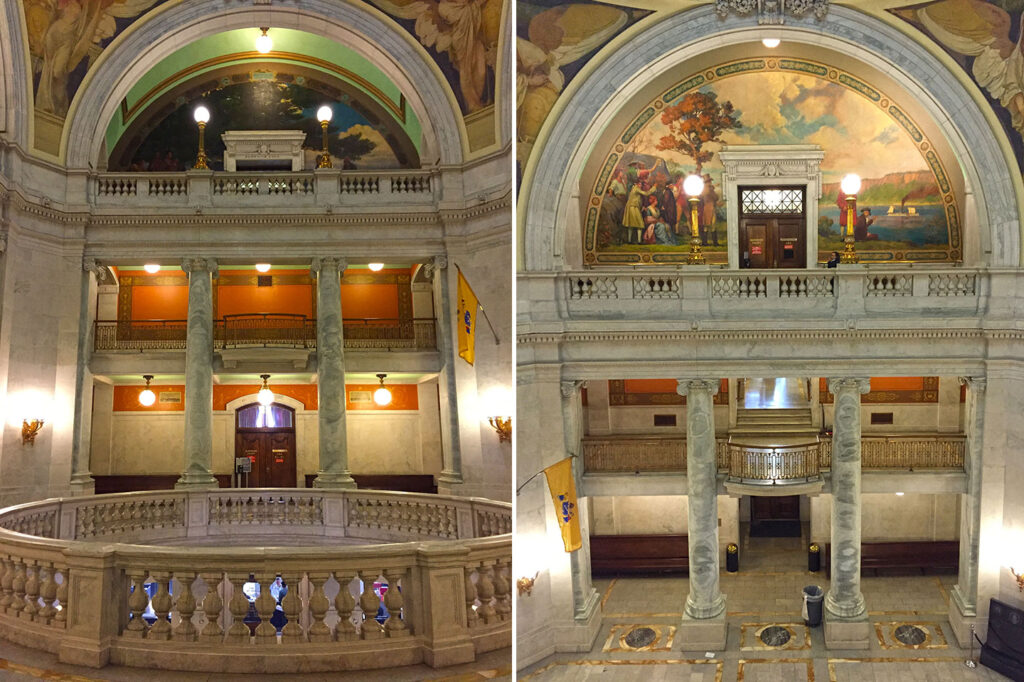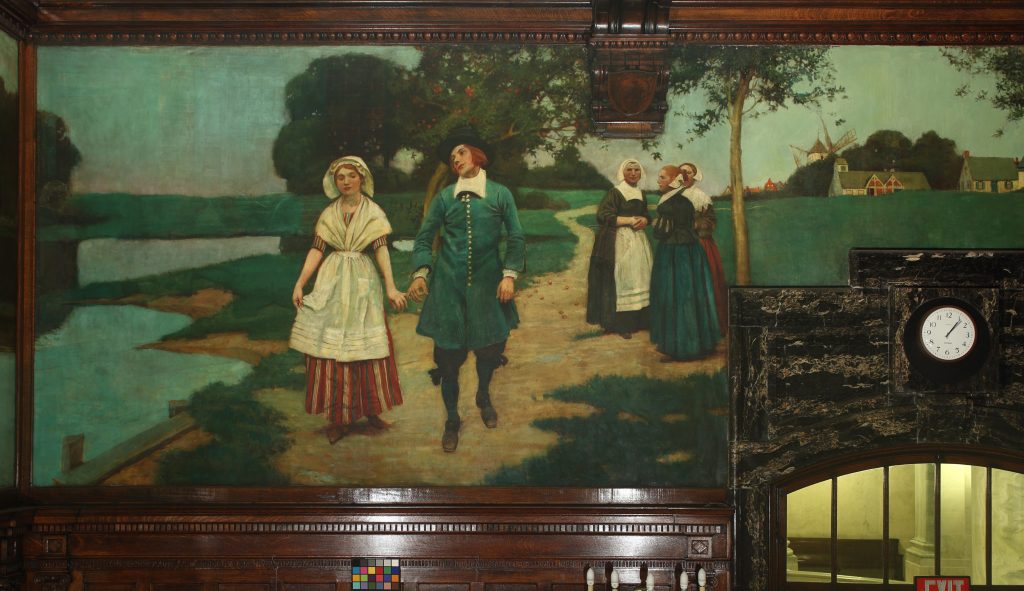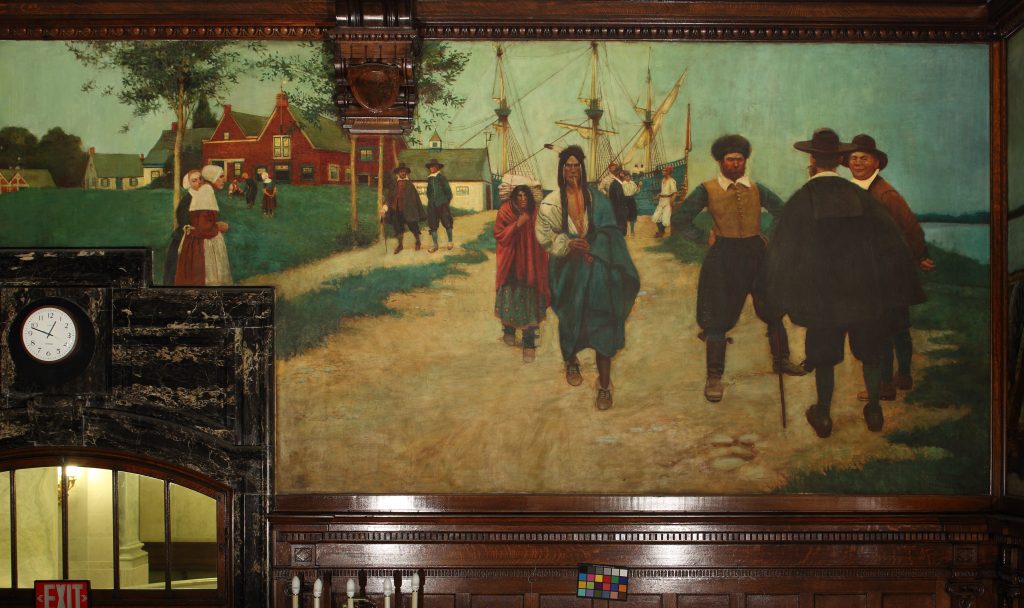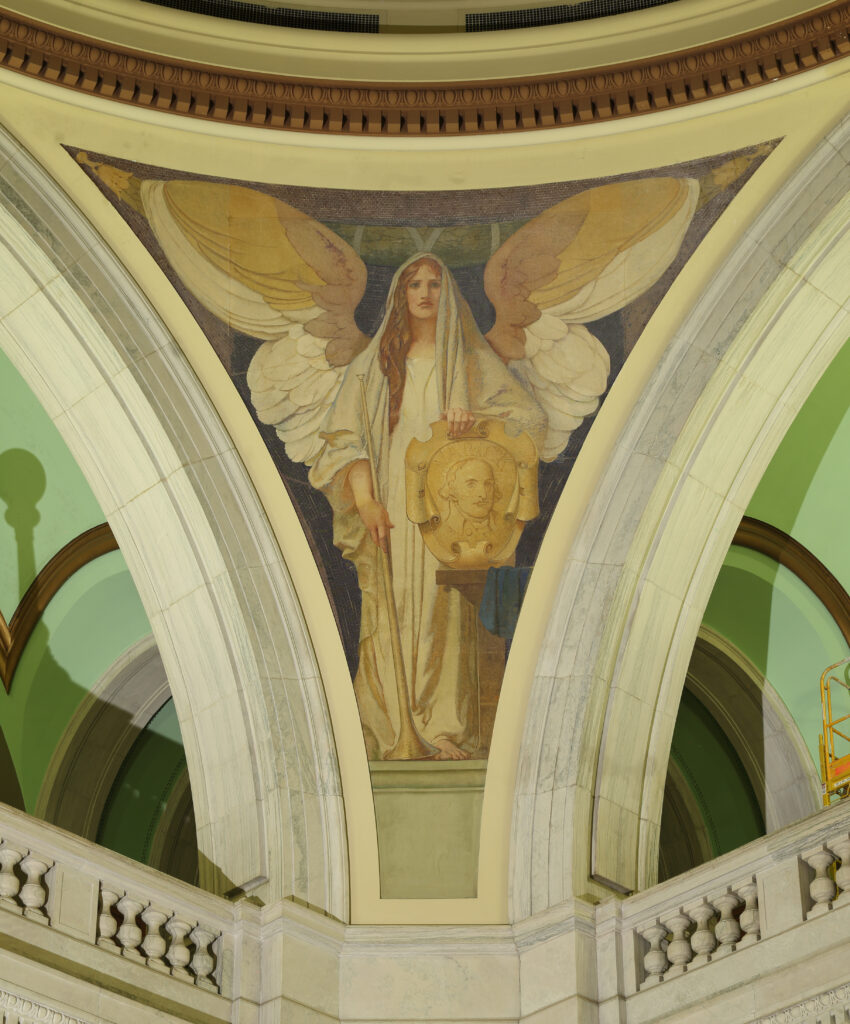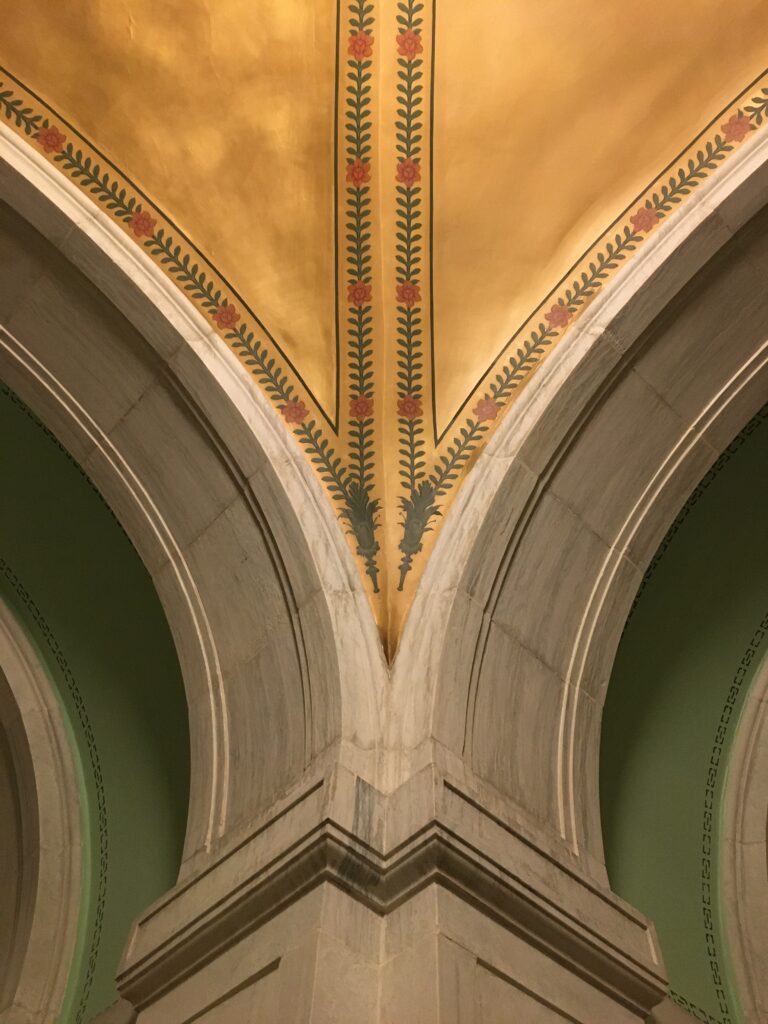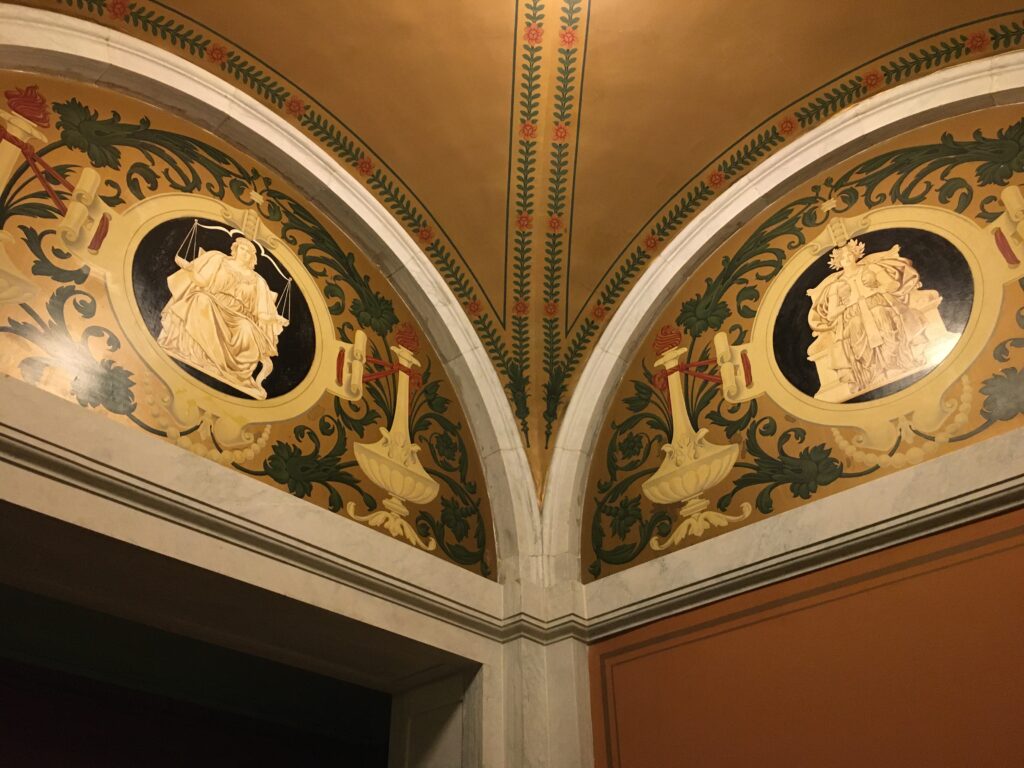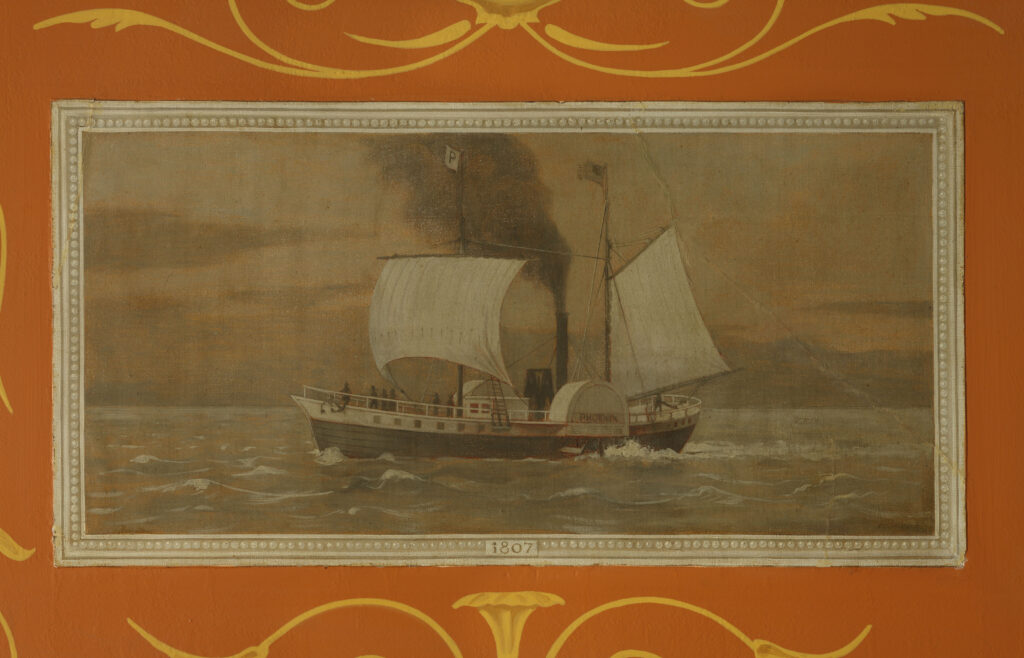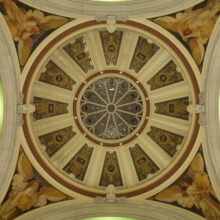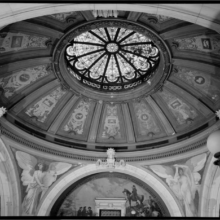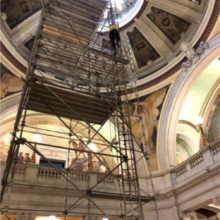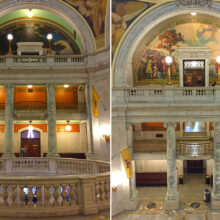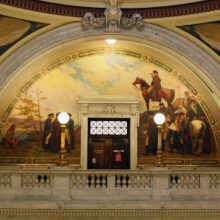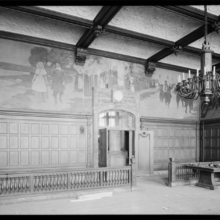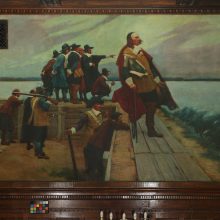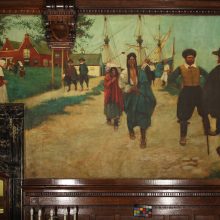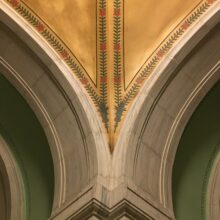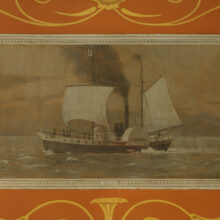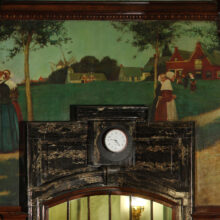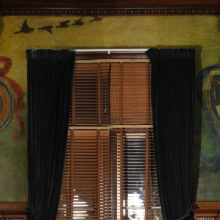Hudson County Courthouse
Hudson County Courthouse, also known as Justice William J. Brennan Jr. Courthouse, (c. 1910) is one of America’s great early-twentieth-century courthouses. Its grand Beaux-Arts exterior hints at the highly ornate decoration that lies within and truly is a depository for some of the greatest murals of the American Renaissance. The murals and decorative painting were designed and executed by the leading muralists of the day, assembled together by Francis D. Millet, the director of decoration at the Columbian Exposition at the 1893 Chicago World’s Fair. The notable artists include: Kenyon Cox, Edwin Blashfield, Charles Yardley Turner, Howard Pyle, and of course, Millet himself. The courthouse served as the seat of Hudson County’s justice system for 56 years before it was abandoned in 1966.
Archival research and microscopic analysis indicate that the courthouse has undergone multiple restoration campaigns over the last 40 years, in response to severe weathering and deterioration. Fortunately, a tremendous amount of physical and archival evidence of the courthouse’s original appearance survives so its interior could be easily revived. Our team analyzed, tested, and documented the conditions of the historic murals, decorative paint, and plaster finishes in March and April of 2012. The goal of this investigation was to understand how the finishes were historically intended to work together and what their current conditions were in order to provide recommendations for their restoration.
Our team returned to the site in late 2019 to complete treatment recommendations for the historic ceiling murals. Conservation treatments were performed for the Cox, Turner, and Millet lunettes; the Millet rectangular murals; and the Pyle murals. Unstable plaster was reinforced with injections of acrylic polymers. Paint layers were stabilized by applying a consolidant with a small natural bristle brush to the flaked paint. Water-based cleaning solutions successfully removed the surface dirt and grime. We removed discolored varnishes and crudely executed non-original paint with the proper solvents. Adhesives were applied to any areas of the detached canvas before an application of a protective non‐yellowing surface coating was applied to all murals. Our conservators in-painted areas with paint loss by precisely color-matching and integrating them into the original paint.

